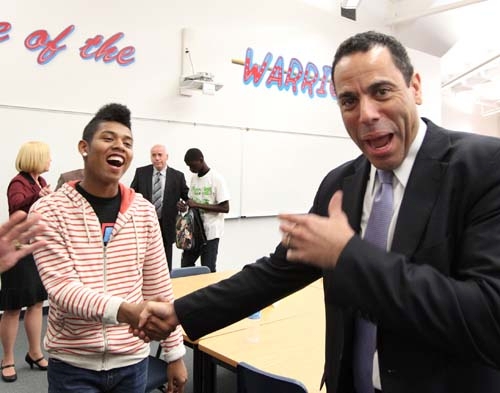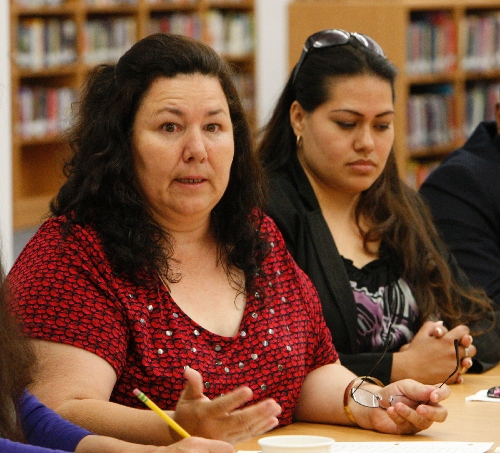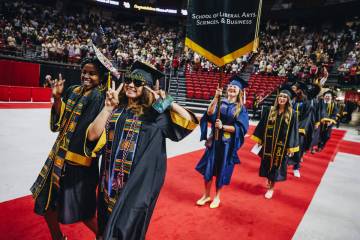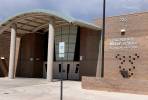Top education official seeks improvement at Western High
Can the poorest performing schools in one of the nation's poorest performing school districts improve?
That's what U.S. Department of Education Deputy Secretary Tony Miller came to find out Thursday at Western High School. Miller has a vested interest.
Starting this school year, his department will give
$2.5 million to Western over three years, in addition to its normal funding, to boost student achievement. Multimillion-dollar turnarounds like this are being initiated at four other persistently struggling Clark County schools this year: Mojave and Chaparral high schools and Hancock and Elizondo elementary schools.
"We're in a crisis situation in this country," Miller said at Western, near Decatur Boulevard and U.S. Highway 95. "You guys live it every day."
In 2010-11, 43 percent of Western's seniors graduated, compared with the state average of 70 percent.
Western's newly reconstituted staff painted a more promising picture for this year.
About 85 percent of juniors are on track with their credits, Principal Neddy Alvarez said. As sophomores, half of this class was behind on the course credits they needed to graduate on time.
Staff members aren't letting students drop out but are getting them caught up, said Susan Taukamoto, who became the school's graduate advocate in October.
She calls on all kinds of tricks to reach dropouts if their parents' number is disconnected and their home address doesn't help. She will find their friends and contact the dropout through Facebook or get their cellphone numbers. But she never calls from the school phone, knowing students see the 799 district number and press "Ignore." She uses her cellphone.
"I know it's tricky," she said, but her success rate is high with the students she is able to reach.
The school now has seven periods a day instead of six because school days are 20 minutes longer. And it now offers Science, Technology, Engineering and Math courses, called STEM, to pique students' interests. In effect, grades in regular courses have improved, which also has to do with a new teaching technique: workshop.
Teachers don't "just stand there and lecture for an hour," STEM teacher Tommy Anderson said. Students learn in small groups, learning by doing with guidance from teachers.
Students have noticed an attitude shift in teachers who have gone from complacent to dedicated, senior Andrew Limas said.
"They're actually waiting for you at the door before class," he said, "and try to offer you help after school if you need it."
But can the school keep up this pace when its millions of dollars in extra funding run dry in 2014-15?
Miller believes Western and other turnaround schools can. The money is there to just flip the switch, he said.
"Not enough people understand that you can fundamentally change a school," he said.
Contact reporter Trevon Milliard at tmilliard@review
journal.com or 702-383-0279.





























